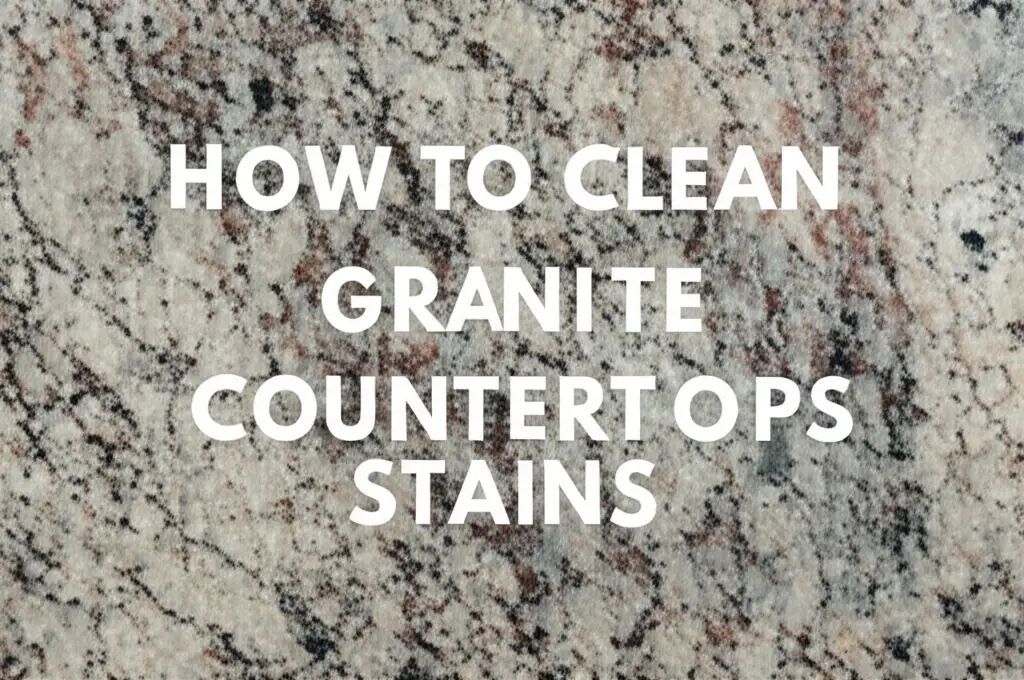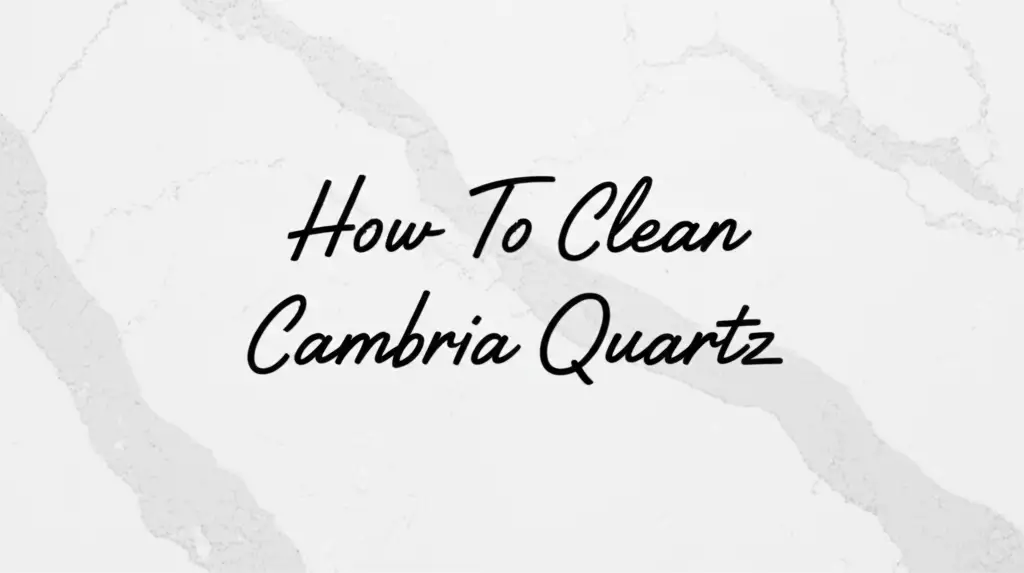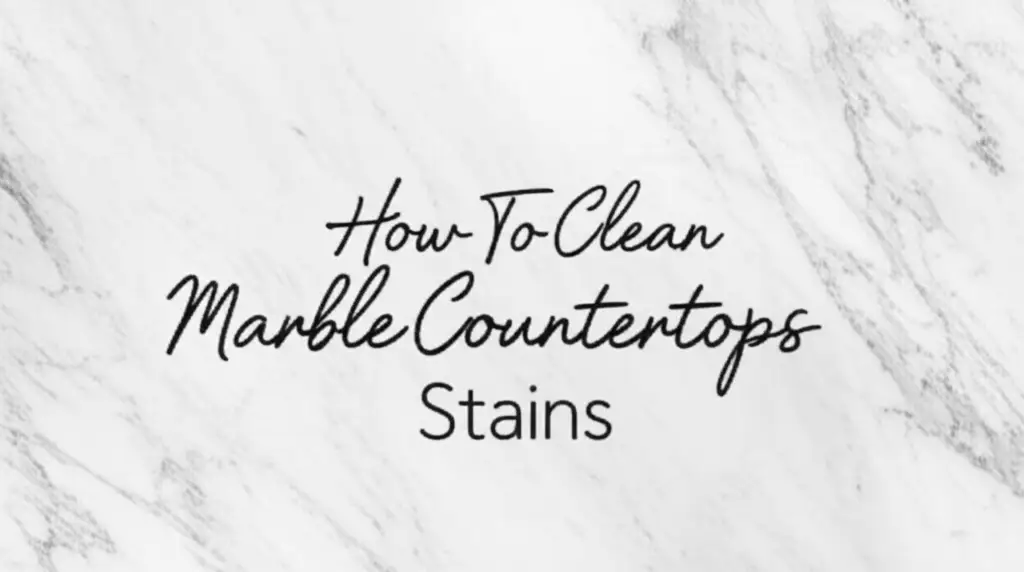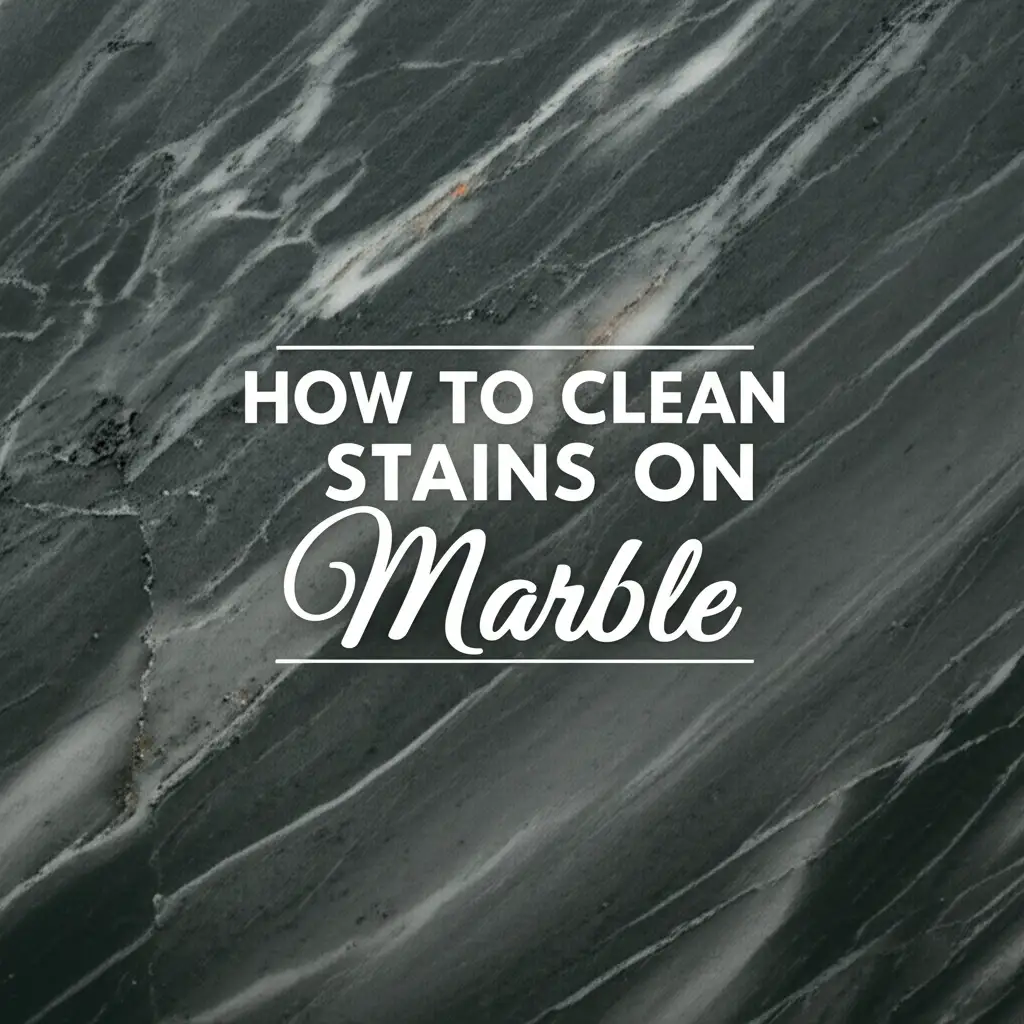· Countertop Care · 10 min read
How To Clean Granite Countertops Stains

Banish Stains: Cleaning Granite Countertops Effectively
Granite countertops bring beauty and value to any home. They offer a luxurious look and feel. However, even tough granite can get stains. Seeing a stain on your beautiful granite countertop can feel upsetting. It makes you worry about the stone’s lasting beauty.
But do not worry. Learning how to effectively clean granite countertops stains is simpler than you think. This guide gives you clear steps. You will learn about different stain types. We will cover safe and effective cleaning methods. This includes using poultices. You will also discover ways to prevent future stains. By the end, you will feel confident keeping your granite looking its best. Let us make your granite shine again.
Takeaway
- Act Fast: Blot fresh spills immediately. Do not wipe.
- Identify Stain Type: Different stains need different cleaning agents.
- Use Poultices: This is the most effective method for deep-set stains.
- Avoid Harsh Chemicals: Never use acidic cleaners, ammonia, or abrasive scrubs.
- Seal Your Granite: Regular sealing protects granite from absorbing stains.
To clean granite countertops stains effectively, first identify the stain type. Then, apply a suitable poultice made from an absorbent material and the correct chemical agent. Allow the poultice to dry completely, then remove it carefully to lift the stain from the porous stone.
Understanding Granite and Stain Types
Granite is a natural stone. It forms from cooled magma. This stone is very hard. It resists heat and scratches well. However, granite is also a porous material. This means it has tiny holes. Liquids can seep into these holes. This makes granite prone to stains if not sealed properly.
Understanding your granite helps you clean it better. Recognizing the type of stain is the first step in successful removal. Each stain type needs a different approach. Using the wrong cleaner can make the stain worse. It can even damage your granite.
Common Types of Granite Stains
Stains on granite usually fall into specific categories. Knowing these helps you pick the right cleaning method. Some stains are simple to remove. Others need more effort. I have seen many kinds of stains on granite. Here are the most common ones.
- Oil-Based Stains: These come from cooking oil, grease, lotions, or cosmetics. They appear as dark spots. The granite around them darkens. Oil spreads easily. This stain type penetrates deeply.
- Organic Stains: Coffee, tea, fruit juices, food spills, and even leaves can cause these. They often leave a pinkish-brown stain. These stains come from natural materials. They are common in kitchens.
- Water Spots and Mineral Deposits: Hard water leaves mineral residues. These appear as dull spots or white rings. They form when water evaporates. These are not true “stains” but mineral buildup.
- Ink or Dye Stains: Markers, ink pens, or dyes from clothing can cause these. They leave distinct colored marks. These can be stubborn to remove. They often penetrate quickly.
- Mold or Mildew Stains: These appear as black, green, or fuzzy spots. They grow in damp areas. They can appear on granite near sinks or in bathrooms. Mold needs a specific treatment. You can learn more about general granite cleaning here: How to Clean Granite Counter Tops.
- Metal Stains (Rust): Rust spots come from iron objects left on the surface. These include cans, nails, or pots. They leave orange or reddish-brown marks. Rust stains need special removers.
Recognizing the stain’s origin guides your cleaning choice. Do not guess what caused it. Observe the color and location. This gives clues for picking the right cleaner. Many stains respond well to home remedies. Some need professional products.
Essential Tools and Supplies for Stain Removal
Before you start cleaning, gather your tools. Having everything ready makes the process smoother. It also ensures you use safe items. Some common household items work well for granite. Other items might surprise you. I always make sure I have these things on hand.
You must avoid harsh chemicals. Products like ammonia, bleach (in high concentrations), vinegar, or abrasive cleaners can harm granite. They can etch the surface. They can also strip the sealant. This makes your granite more vulnerable to future stains. Always choose products specifically for natural stone.
Must-Have Supplies
- Clean, Soft Cloths or Microfiber Towels: These are for wiping and blotting. They prevent scratches. Microfiber is very absorbent.
- Absorbent Material for Poultices:
- Baking Soda: Excellent for oil-based stains.
- Flour or Kaolin Clay: Good for general poultices.
- Paper Towels: For simple blotting.
- Chemical Agents (based on stain type):
- Hydrogen Peroxide (3% or 12%): Good for organic and mold stains. It is a gentle bleaching agent.
- Acetone (Nail Polish Remover without dyes): Works well for oil-based stains and some ink. It evaporates quickly.
- Rubbing Alcohol: Effective for some ink stains.
- Poultice Powder: Some specialized kits offer this.
- Mild Dish Soap: For general cleaning.
- Plastic Wrap: To cover poultices. This keeps them moist.
- Painter’s Tape or Masking Tape: To seal the plastic wrap.
- Plastic Scraper or Spatula: For carefully removing dried poultices. Do not use metal.
- Clean Water: For rinsing.
- Gloves: Protect your hands, especially when using chemical agents.
- Sealant (Optional but Recommended): After cleaning deep stains, resealing is a good idea. This protects the granite. You can learn more about preparing granite for sealing here: How to Clean Granite Before Sealing.
Always test any cleaning agent. Apply it to a hidden spot first. This helps ensure it does not harm your specific granite. Different granite types react differently. A small test prevents big mistakes. Trust me, a little test goes a long way.
General Steps for Cleaning Fresh Granite Stains
A fresh stain is much easier to remove than an old one. Speed is key when dealing with spills on granite. My first rule is always to act quickly. Do not let spills sit for long. This gives them less time to penetrate the stone’s pores. Quick action can save you a lot of effort later.
Blotting vs. Wiping
When a liquid spills on your granite, do not wipe it. Wiping spreads the spill. It also pushes the liquid deeper into the granite’s pores. Instead, you need to blot it.
- Blot Immediately: Grab a clean, soft cloth or several paper towels. Gently press them onto the spill. Absorb as much liquid as possible.
- Change Cloths: Use fresh sections of the cloth or new paper towels until no more liquid transfers.
- Rinse and Dry: After blotting the excess, wipe the area with a damp cloth. Use plain water. Then dry the area completely with a clean, dry cloth. This prevents water spots.
Mild Cleaning Solution for Everyday Stains
For light, fresh stains or general grime, a simple solution works wonders. This method is safe for daily use. It helps keep your granite looking good.
- Prepare Solution: Mix a few drops of mild dish soap with warm water in a spray bottle. Use soap that does not contain dyes or strong perfumes.
- Spray and Wipe: Spray the solution directly onto the stained area. Let it sit for a minute or two.
- Gentle Scrub: Use a soft cloth to gently scrub the stain. Apply light pressure.
- Rinse Thoroughly: Wipe the area several times with a clean, damp cloth. Make sure all soap residue is gone. Soap residue can dull your granite over time.
- Dry Completely: Dry the surface with a clean, dry microfiber towel. This prevents water spots and streaks.
For stubborn spots, you might need to repeat these steps. Sometimes, a gentle scrub with a soft brush can help. But always use a soft brush. Never use anything abrasive. Abrasive materials can scratch the polished surface of your granite. Always be gentle with your beautiful stone.
Tackling Specific Stain Types on Granite
When a general cleaning does not work, it means the stain has set. This is where specific treatments come in. Each type of stain reacts differently to various cleaners. Knowing the right approach for each stain makes removal much more effective. I have learned through experience that a targeted attack works best.
Oil-Based Stains (Grease, Cooking Oil, Lotions)
Oil stains are common in kitchens. They appear as dark spots. They happen when oil seeps into the granite.
- Method: Use a poultice made with an absorbent powder and a degreasing agent.
- Ingredients:
- Absorbent powder: Baking soda or flour.
- Chemical agent: Acetone (nail polish remover without dyes) or hydrogen peroxide (for lighter granite).
- Steps:
- Mix the powder with acetone or hydrogen peroxide. Create a thick paste. It should be like peanut butter.
- Apply the paste generously over the stain. Cover it completely. The paste should be about 1/4 to 1/2 inch thick.
- Cover the paste with plastic wrap. Tape down the edges. This keeps the poultice moist.
- Let it sit for at least 24 hours. For deep stains, leave it for 48 hours. The poultice will dry and absorb the oil.
- Once dry, remove the plastic. Scrape off the dried paste with a plastic spatula.
- Wipe the area with a damp cloth. Then dry it.
- Repeat if necessary. Old, deep stains may need multiple applications.
Organic Stains (Coffee, Tea, Food, Juice)
These stains often look pinkish-brown or reddish. They come from food and drink. They are common around cooking areas.
- Method: A poultice with a mild bleaching agent.
- Ingredients:
- Absorbent powder: Flour or baking soda.
- Chemical agent: Hydrogen peroxide (3% or 12% solution). For dark granite, test a hidden spot first as it can lighten the stone.
- Steps:
- Mix the powder with hydrogen peroxide to make a thick paste.
- Apply the paste to the stain. Cover it with plastic wrap. Tape the edges.
- Allow it to dry completely. This takes 24-48 hours.
- Scrape off the dried poultice.
- Rinse the area with clean water. Dry thoroughly.
- Repeat if the stain remains.
Water Spots & Mineral Deposits
These are often white, dull spots or rings. They come from hard water. They are not true stains but mineral buildup. However, they can make your granite look unsightly.
- Method: Gentle scrubbing or specialized cleaners.
- Ingredients:
- Stone-safe hard water remover.
- Soft cloth.
- Very fine steel wool (Grade 0000) for stubborn deposits, use with extreme caution.
- Steps:
- For light spots, spray with a stone-safe hard water cleaner. Wipe clean.
- For tougher spots, dampen the area. Gently rub with Grade 0000 steel wool. Apply very little pressure. Rub in small circles. This helps break down mineral bonds.
- Rinse the area well with clean water. Dry with a soft cloth.
- Never use vinegar or acidic cleaners. They will etch your granite. For more specific help with these stains, check out this guide: How to Clean Hard Water Stains From Granite.
Ink or Dye Stains
These can be tricky. The method depends on the granite color.
- Method: Solvents.
- Ingredients:
- Acetone (for dark granite).
- Hydrogen peroxide (for light granite).
- Rubbing alcohol.
- Steps:
- Dampen a cotton ball or soft cloth with the chosen solvent.
- Gently blot the stain. Do not rub vigorously. Blotting lifts the ink.
- Repeat with a fresh section of the cloth until the stain is gone.
- Rinse with water and dry. If the stain is deep, a poultice with the chosen solvent might be needed.
Mold or Mildew Stains
Mold forms in damp, poorly ventilated areas. It looks black or green.
- Method: A mild bleach solution or hydrogen peroxide.
- Ingredients:
- Diluted household bleach (1 part bleach to 3 parts water) for light-colored granite.
- Hydrogen peroxide (3% solution) for dark granite or if avoiding bleach.
- Soft brush.
- Steps:
- Mix your chosen solution.
- Apply to the moldy area. Let it sit for 10-15 minutes.
- Gently scrub with a soft brush.
- Rinse thoroughly with clean water. Dry the area completely to prevent mold regrowth.
- Ensure the area is well-ventilated afterward. If you are dealing with mold on granite, this resource might be helpful: How to Clean Mold Off Granite Headstone.
Metal Stains (Rust)
These appear as orange or reddish-brown marks. They come from iron objects.
- Method: A rust-removing poultice.
- Ingredients:
- Commercial rust stain remover for natural stone. (These contain a reducing agent).
- Absorbent powder (e.g., flour or diatomaceous earth) to make a paste.
- Steps:
- Follow the product instructions carefully.
- Typically, you mix the remover with the powder to form a paste.
- Apply the paste to the rust stain. Cover with plastic wrap.
- Allow it to dry completely (often 24-48 hours).
- Scrape off the dried poultice. Rinse and dry.
- Repeat if needed. Rust can be very stubborn.
Always remember safety. Wear gloves. Ensure good ventilation. Work patiently. Stubborn stains can be frustrating. But with the right method, you can often remove them yourself.
- granite cleaning
- stain removal
- countertop maintenance
- granite care
- home cleaning tips




